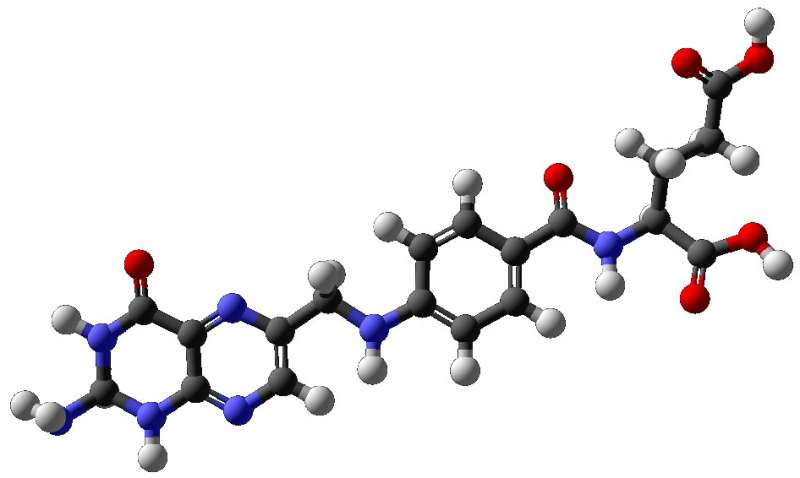Why some people may be at greater risk of folate deficiency

As many expectant mothers know, getting enough folate is key to avoiding neural tube defects in the baby during pregnancy. But for the individuals who carry certain genetic variants, dealing with folate deficiency can be a life-long struggle which can lead to serious neurological and heart problems and even death.
Now a Donnelly Centre study offers clues to how to recognize early those who are most at risk.
Defects in an enzyme called MTHFR, or 5,10-methylenetetrahydrofolate reductase, which modifies folate, or vitamin B9 as it is also known, to produce other essential cellular components, can increase a person’s need for folate. MTHFR deficiency occurs when a person inherits two defective copies of this gene, one from each parent. Disease severity depends on the exact changes in the composition of the amino-acid residues which make up the protein and which are encoded by the two copies of the gene that a person carries.
“The benefit of recognizing MTHFR deficiency early is that you can start preventative therapy, including a high folate diet, very early in life and prevent or reduce the most severe effects,” says Fritz Roth, a professor of molecular genetics in the Donnelly Centre for Cellular and Biomolecular Research at the Temerty Faculty of Medicine and senior author on a new study into the genetic causes of the disorder.
Their findings are published in the American Journal of Human Genetics.
There are likely thousands of variants circulating in the population whose effects on folate metabolism—and health—remain unknown. Knowing which variants impair enzyme function can help predict, and possibly prevent, the negative consequences associated with MTHFR deficiency.
Which is why Roth’s team decided to construct all possible MTHFR variants to identify the ones that don’t function properly and therefore could impact health. Known as deep mutational scanning, the approach entails substituting each of the enzyme’s 656 amino-acid residues with another of the 20-naturally occurring amino-acids, and testing how well the altered enzyme functions.
The research is part of a wider effort to experimentally test human variant functions that is happening in labs around the world including the Atlas of Variant Effects Alliance co-founded by Roth. A related “Impact of Genomic Variation on Function” initiative is being launched this fall by the National Institutes of Health in the U.S.
“The point of this work is to be ready and know the damaging variants ahead of time instead of waiting for the variant to be identified in a patient and then do experiments on it,” says Roth, who is also Senior Investigator at the Lunenfeld-Tanenbaum Research Institute at Sinai Health Systems and holds Canada Excellence Research Chair in Integrative Biology. “We want to be ready when a new one comes along.”
To test variant function, the researchers introduced each variant one at a time into Baker’s yeast cells which had been engineered to lack their own version of the MTHFR gene without which they cannot grow on a given medium. Human MTHFR variants were then scored as functional or nonfunctional, or somewhere in between, based on their ability to rescue yeast growth.
While the most damaging mutations which abolish MTHFR function are rare, other variants can impact the enzyme in more subtle ways to make it less efficient. Indeed, as many as half of humans carry at least one copy of an MTHFR variant known as A222V, with the amino-acid alanine changed into valine at position 222. For the 10% of women who carry two copies, a folate-rich diet may be sufficient to stave off the risk of birth defects.
But having a copy of A222V might significantly raise disease risk (in both men and women) if another gene variant whose function is not known is also present in the same individual. To test this, Roth’s team examined all MTHFR variants, but this time together with A222V.
“A variant could have one effect in the normal reference human background but have a stronger effect together with this common A222V variant and we wanted to investigate that,” says Roth.
They found that the common A222V variant can impact the effect of other variants, which on their own might not impair enzyme function. Different amino acids changes within the same gene can interact with each other to impact enzyme function, so that identifying interactions for variant combination before they are seen in patients might help predict disease severity.
“Clinical geneticists will usually be right in saying that this common variant is not a big deal, and that you can overcome its effects by getting more dietary folate, but a major point of our paper is that A222V also changes the impact of other variants,” says Roth.
Source: Read Full Article
